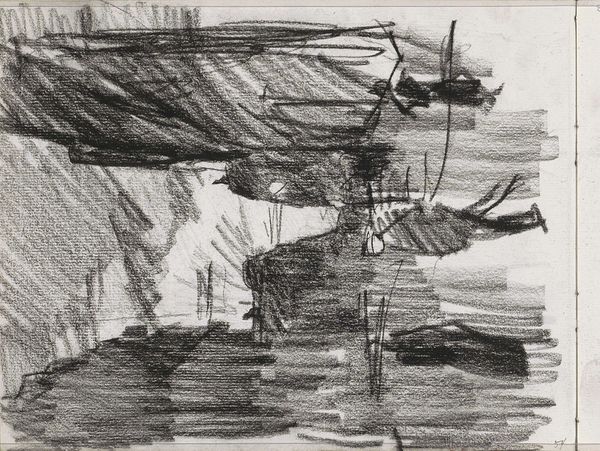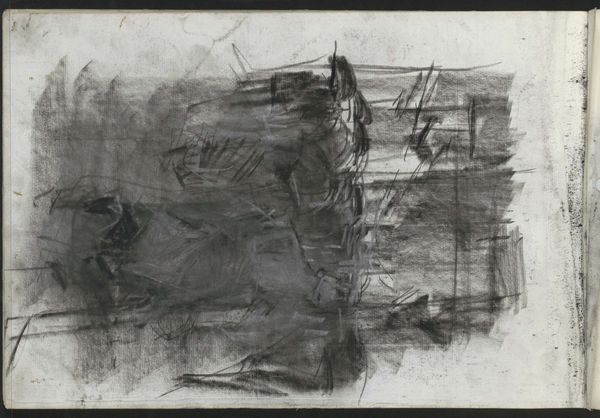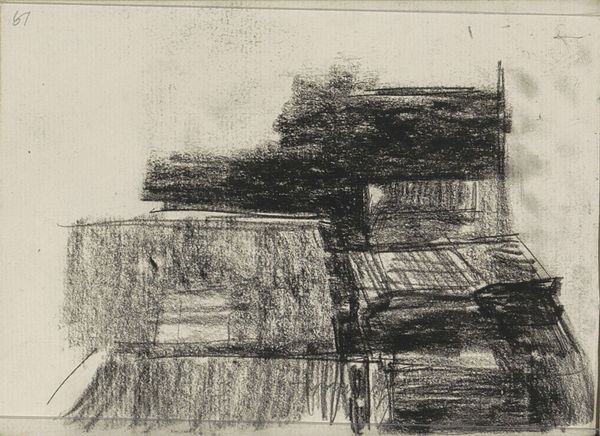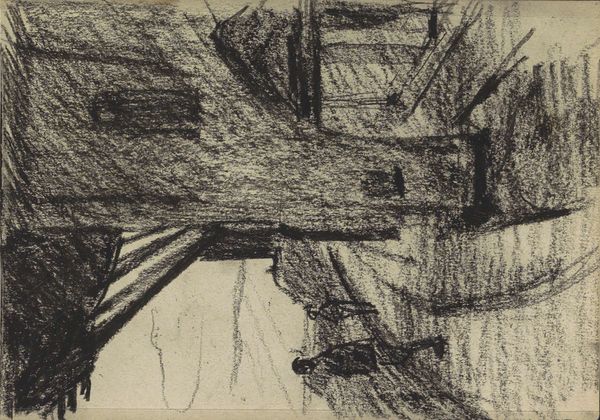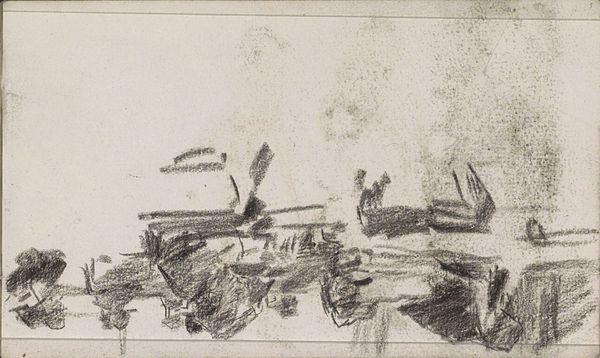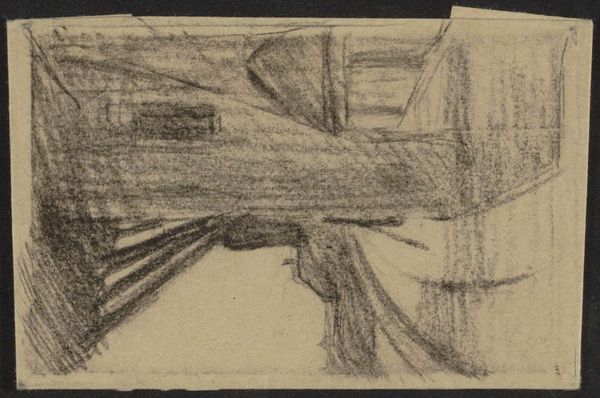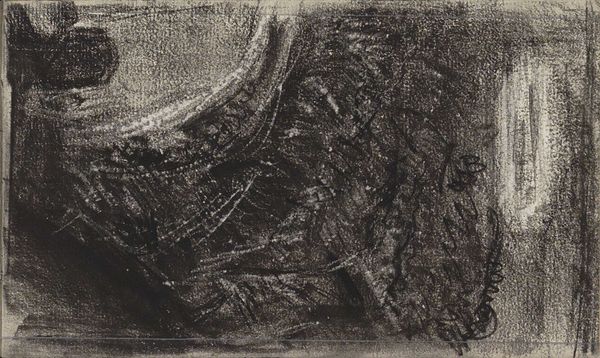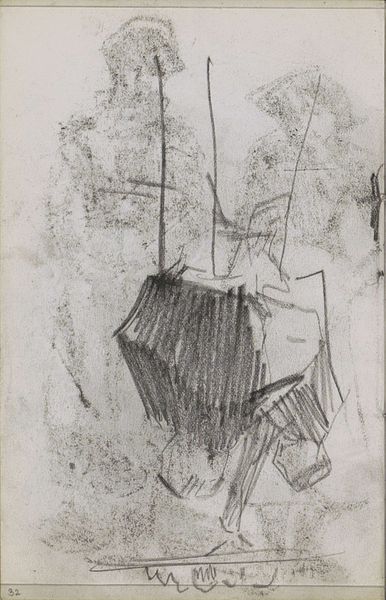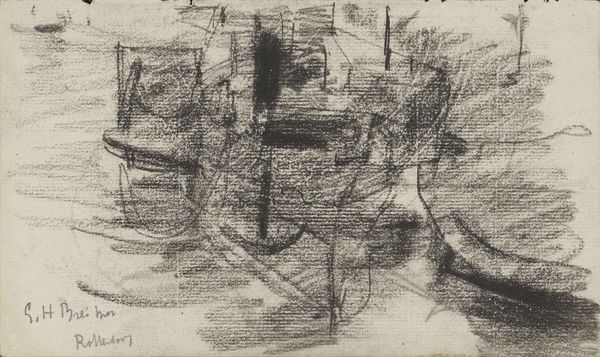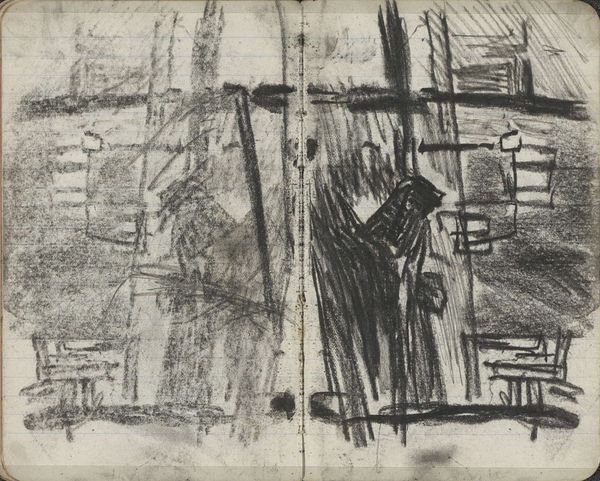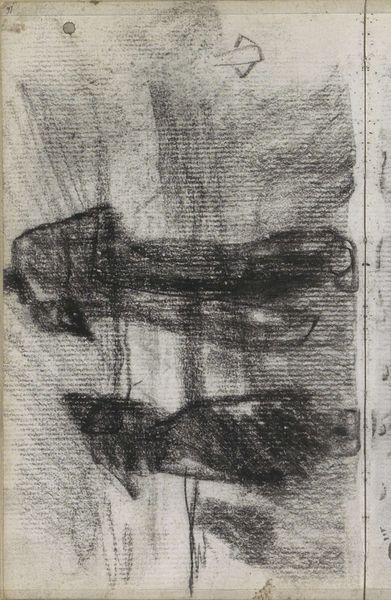
Copyright: Rijks Museum: Open Domain
Editor: This is "Stoet mensen op straat," or "Crowd of People on the Street," a charcoal drawing by Isaac Israels, created sometime between 1886 and 1903. It's part of the Rijksmuseum's collection. It feels very… transient. Almost like a snapshot of a moment in time. What symbolic meaning might you find in the fleeting imagery of this cityscape? Curator: It is as if the charcoal itself embodies the ephemerality of the modern experience. Notice how Israels doesn't define hard edges; instead, figures emerge and dissolve back into the urban fabric. This speaks to the shifting nature of identity in the burgeoning modern city. Editor: I see that, the way figures seem to both appear and disappear simultaneously. But what's the significance of using charcoal specifically? Curator: Charcoal lends itself to capturing fleeting moments because it can be both bold and easily smudged, reflecting the impermanence of the modern cityscape. Each stroke holds a trace of immediacy and the constant flow of life, don’t you think? The artist emphasizes suggestion rather than rigid definition, mirroring the constant flux of urban experience. Editor: So the choice of charcoal reinforces this idea of impermanence and the ever-changing nature of city life. It is as though the material itself echoes the theme. I guess I was seeing only what, but you’ve helped me see why. Curator: And I learned something from your reading of "transient"! It’s precisely this sense of impermanence that Israels so poignantly captures.
Comments
No comments
Be the first to comment and join the conversation on the ultimate creative platform.
